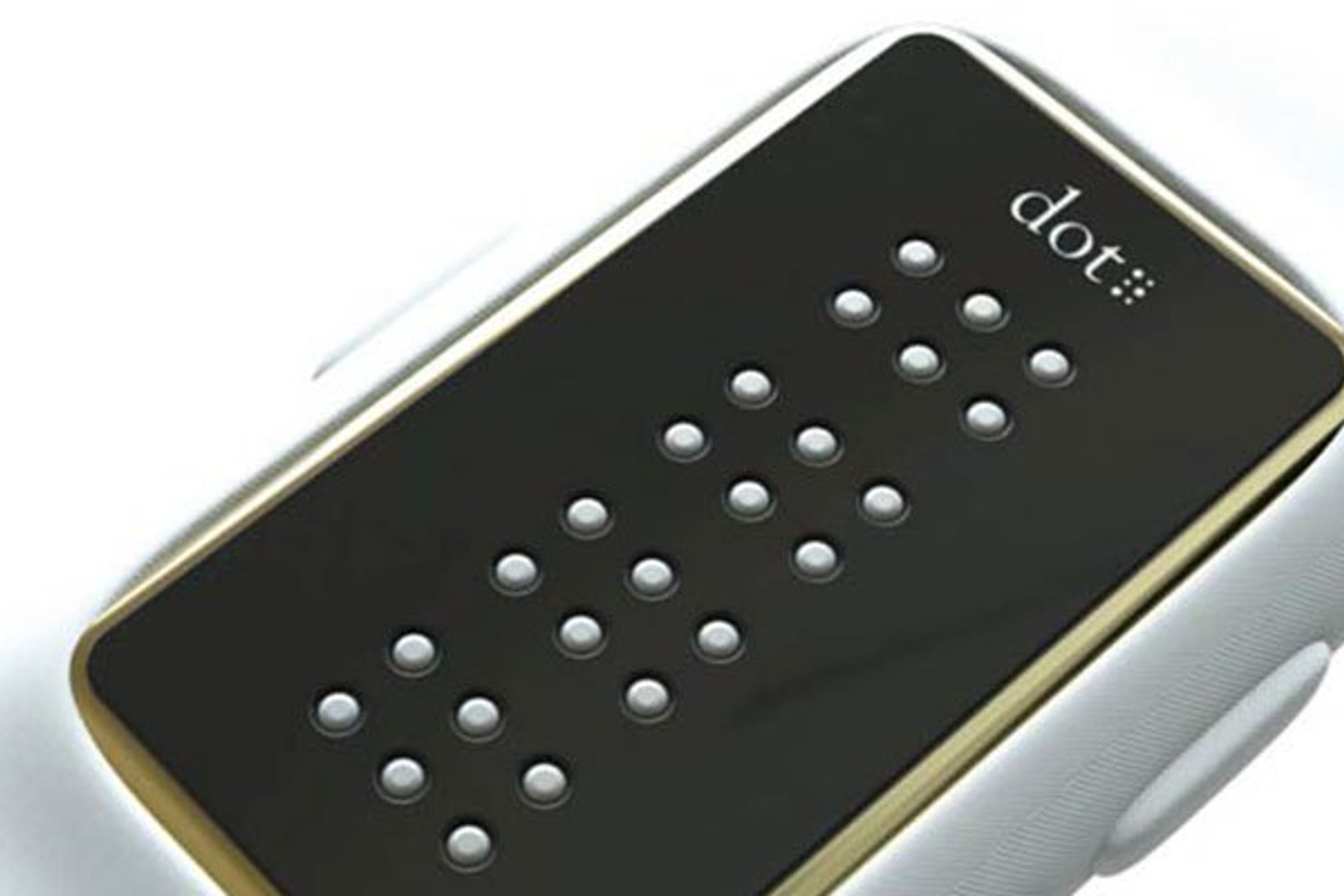At Adeptia, our goal is to make things better — and not just by developing great integration solutions. We’re committed to helping improve the quality of life for our customers, our employees, and our planet. Technology has transformed our lives by improving everything from healthcare to communications. But we can all do more, which is why we’ve launched a new series featuring technology that makes the world a better place.
When it comes to innovative technology integrations, a South Korean startup hasbuilt the first wearable smart device for the visually impaired. This is a great example of how companies worldwide are making new products to improve the quality of life.
The device, called the Dot, features haptic technology that provides feedback based on touch. It integrates four cells of six active dots on the screen, which provide a tactile interface via 24 rounded magnetic metal pins. The pins are physically raise-up to produce four braille characters at a time. Moreover, the speed at which the device displays characters can be customized to the individual user’s preferences.
The Dot leverages Bluetooth technology to display text messages from any compatible device, such as a smartphone or tablet. “Now, blind people can access various text data, such as messages and tweets, anywhere, anytime,” says Eric Ju Yoon Kim, co-founder and CEO of the company.
Kim came up with the idea for the Dot when he noticed a blind classmate was carrying around piles of books while everyone else had most of their books on a tablet.”Although there are features which blind people may use on the iPad, accessibility is limited,” says Kim. “Other adaptive technology devices are often expensive, and there has been no major innovation in technology, especially for braille.”
The Dot features a sleek aluminum watch face and comes with either a sport or leather band. In addition to Bluetooth, it includes a gyroscope, accelerometer and touch sensor. All the tech goodies that are common in state-of-the-art wearables. Of course, it also functions as a watch and an alarm clock. The company says the device will run for about 10 hours before it has to be re-charged.
“The watch has to be connected to a mobile device in order to receive notifications,” says Kim. “And, yes, it supports both iOS and Android devices.”Kim says the Dot offers an alternative to relying on a smartphone converting a message to audio.”Until now, if you got a message on iOS from your girlfriend, for example, you had to listen to Siri read it to you in that voice, which is impersonal,” Kim told Tech in Asia.
Dot revolutionizes mobile communication for blind users. “90 percent of blind people become blind after birth, and there’s nothing for them right now – they lose their access to information so suddenly,” Kim says. “Dot can be their lifeline, so they can learn Braille, and access everyday information through their fingers, which is the goal of Braille literacy.”
Dot was started by Kim and Ki Sung, while they were both students at the University of Washington. To date, the company has raised more than $1.5 million in seed funding. The Dot team has 10 patents on its technology. Since launching, they also have recruited Dong-Soo Kwon, a professor at the Center for Future Medical Robotics at the Korea Advanced Institute of Science and Technology (KAIST). Kwon is a pioneer in haptic research, with 54 patents, according to Tech in Asia.
With the growing potential of the Internet of Things, the company is also working on a tablet, as well as braille technology for train stations and ATMs.”Although e-books can be read using the DOT we understand that this may not be the most convenient option,” says Kim “To address this we are currently in the process of designing a DOT pad to encourage user’s literacy and give access to additional information. This DOT pad will give a user access to data such as mathematics, shapes, and lengthy e-texts.”
In the meantime, the Braille SmartWatch is expected to be available in the U.S. in 2016, with a retail price of under $300.
Greg Sandler, a B2B content development expert and freelance writer, has worked on a wide range of business integration and web development projects. He also has written for hundreds of publications, organizations, government agencies, and private sector clients. In addition to editorial experience, Greg has extensive copywriting and scriptwriting experience. He also has both print and online custom publishing and advertorial experience. Check out his profileon LinkedInor send him an e-mail.
For more articles on innovative technology solutions, check out: The Desolenator: Using Solar Power To Purify SeawaterHow Adeptia Helped Give $256 Million Back To Illinois Businesses In Work Opportunity Tax CreditsApplication to Application Integration Has Been Solved. Here’s What Hasn’t Been Solved (Until Now)



